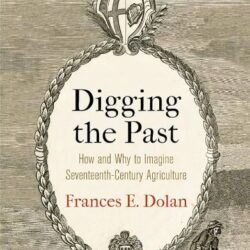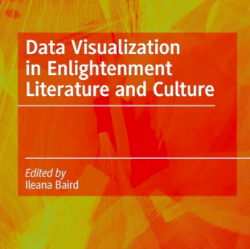The goal of Digging the Past is stated early with the question, “Is it possible to approach the seventeenth century, in its failed proposals and successful ventures, as a resource for imagining future agriculture in fruitful ways?” Frances E. Dolan seeks to answer this question by offering “a fine grained case study that proposes to enrich our understanding of the value of the past. (page seven) The method consists of examining the letters, diaries, notebooks, botanicals, pamphlets, as well as plays, poems and ‘how to’ guides. Among the topics subsequently covered are histories of food and work, literary criticism of the pastoral, histories of elite and vernacular science, of reading and writing practices and so on. This leads to an examination of agricultural topics such as composting and soil amendment, local food, natural wine and hedgerows. Along the way, we also encounter such varied topics from Shakespeare to cannibalism. An extensive and well documented bibliography testifies to the wide-ranging scholarship that supports this book.
Tag: Europe
Ileana Baird, ed. Data Visualization in Enlightenment Literature and Culture.
Over ten finely documented and illustrated chapters, Ileana Baird and her twelve contributing writers offer scholars of the long eighteenth century (1660-c1800) a timely high-tech methodology: graphical conveyance of information. Baird’s new book, Data Visualization in Enlightenment Literature and Culture (2022), demonstrates the utility of content imaging. Baird and her writers have constructed datasets of research on selected topics in visually accessible designs: graphs, tables, figures, tabulations, charts, clustering, topic modeling, network graphs, data mapping,
Lesser, Zachary. Ghosts, Holes, Rips and Scrapes: Shakespeare in 1619, Bibliography in the Longue Durée. Philadelphia: University of Pennsylvania Press, 2021.
The central methodological claim of Lesser’s case study is that an attention to the long and disparate lives of each individual copy helps us to better understand the making of the Jaggard Quartos and allows us to complicate the studies conducted by New Bibliographers, whose bibliographic descriptions and attendant explanations of the texts’ extant forms still condition contemporary approaches to bibliography. By carefully studying individual copies across long periods of time, Lesser provides a fuller picture of the material conditions of their production and use.
Project-Based Teaching in Special Collections: Building Digital Cruikshank
In Fall 2022, students in my combined undergraduate and graduate English seminar at the University of Maryland, Baltimore County participated in a semester-long collaboration with our Special Collections Library. Head of Special Collections, Beth Saunders, and Special Collections librarian, Susan Graham, and I secured seed funding from our university to design and run an upper-level course centered on digitizing a library collection and then curating and building a digital resource.
Gutenberg. Designed by Katarzyna Cioch and Wojciech Wiśniewski. Published by Granna and Portal Games, 2021.
A Gutenberg board game?! “So I guess the audience for this is basically the entire membership of SHARP,” someone tweeted when it came out late last year. Yes and no.




